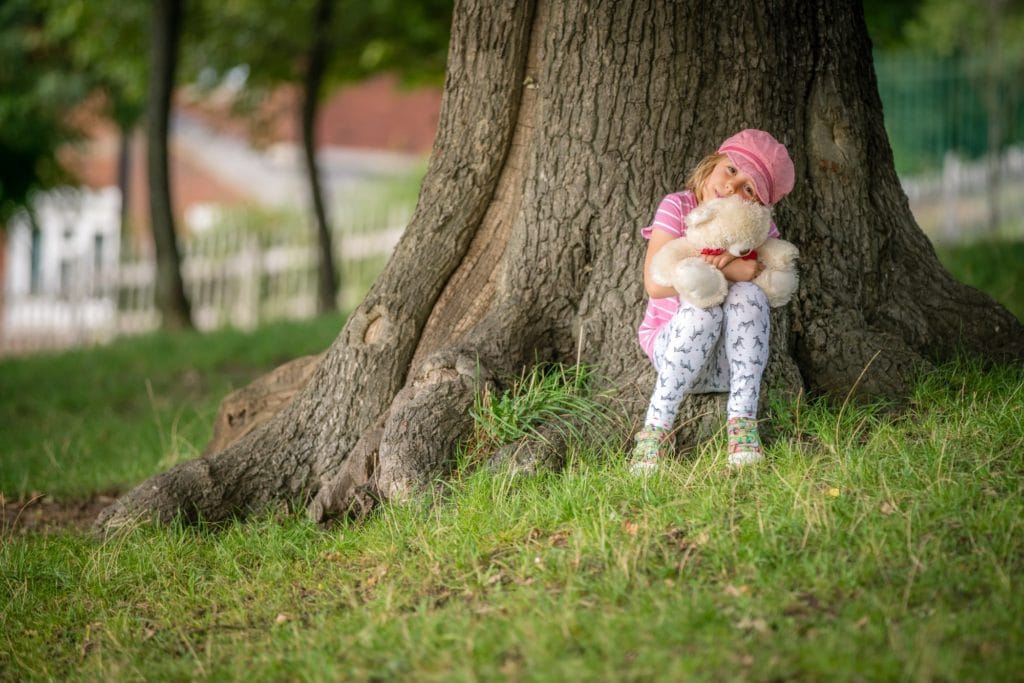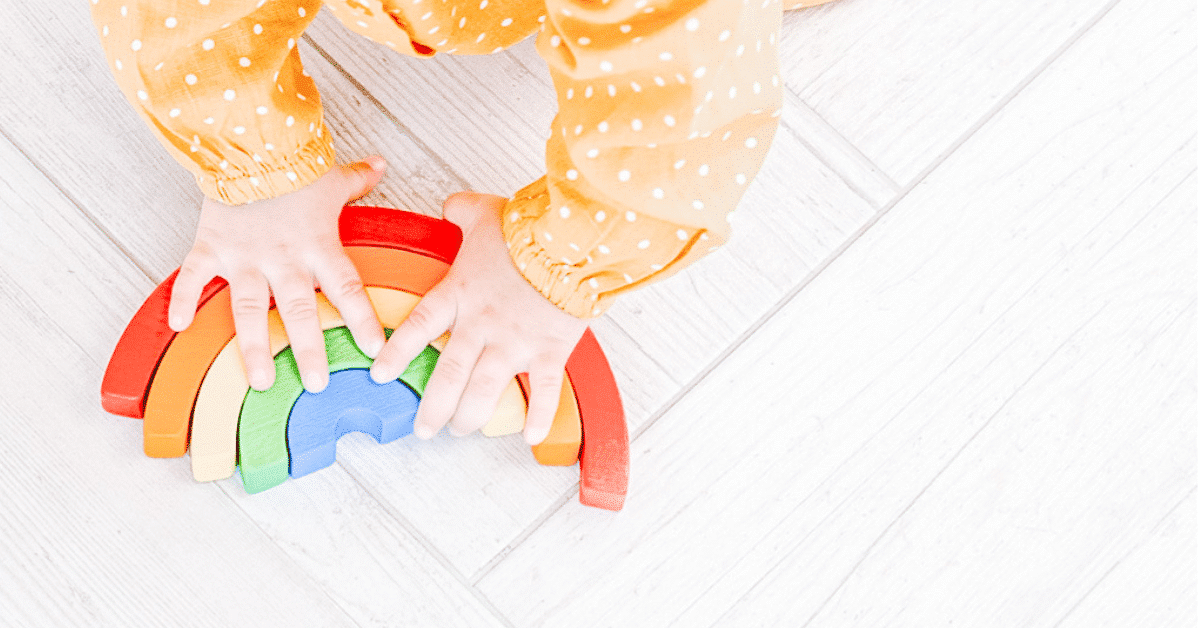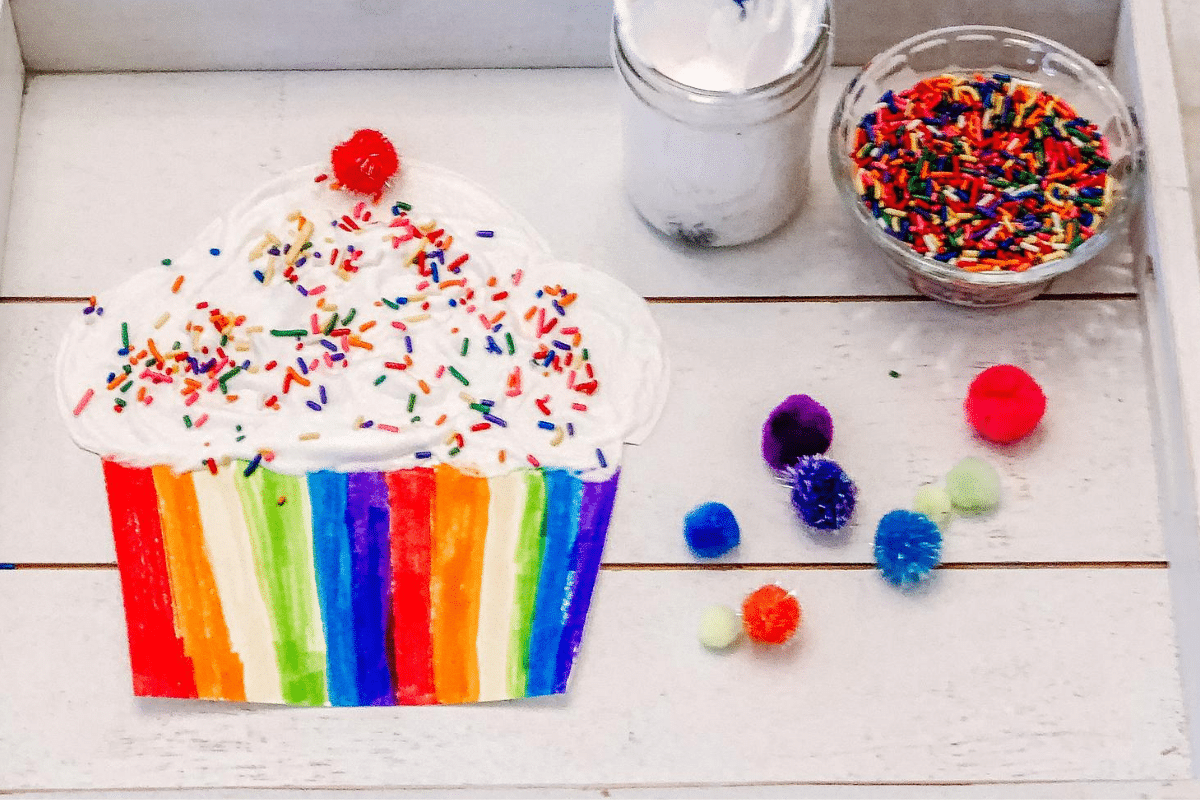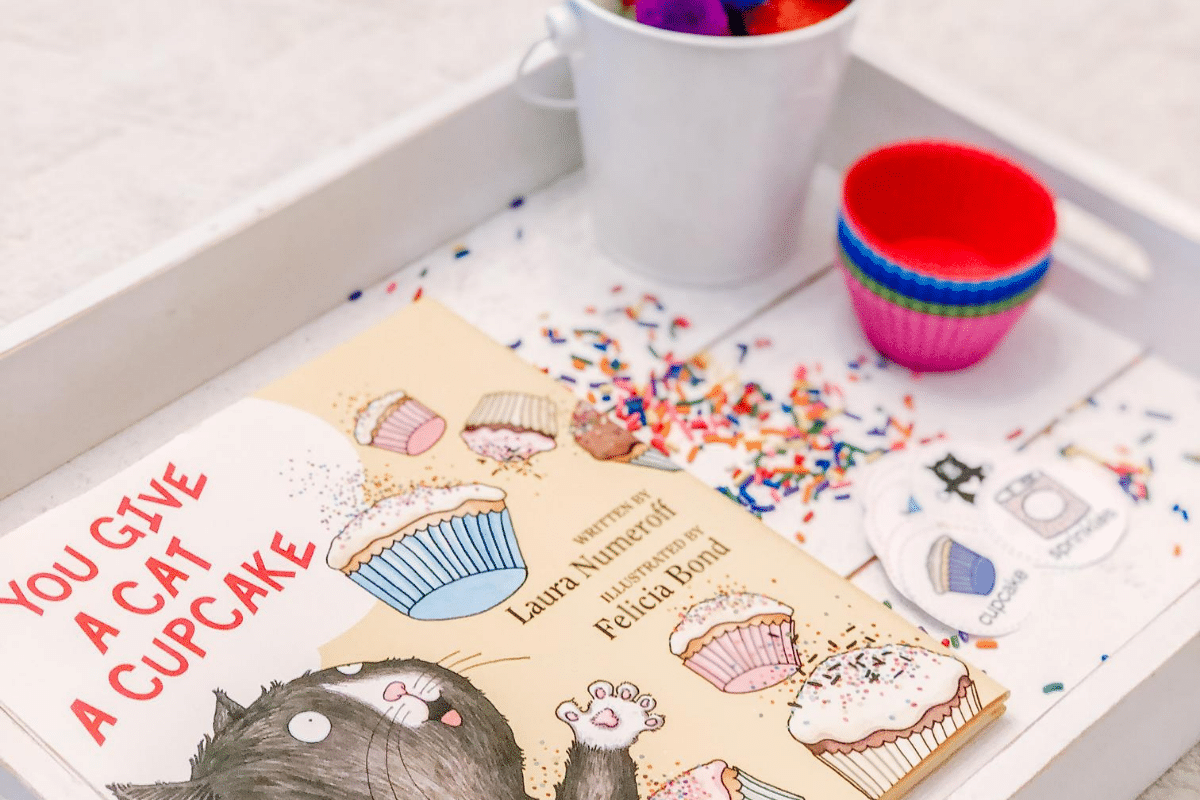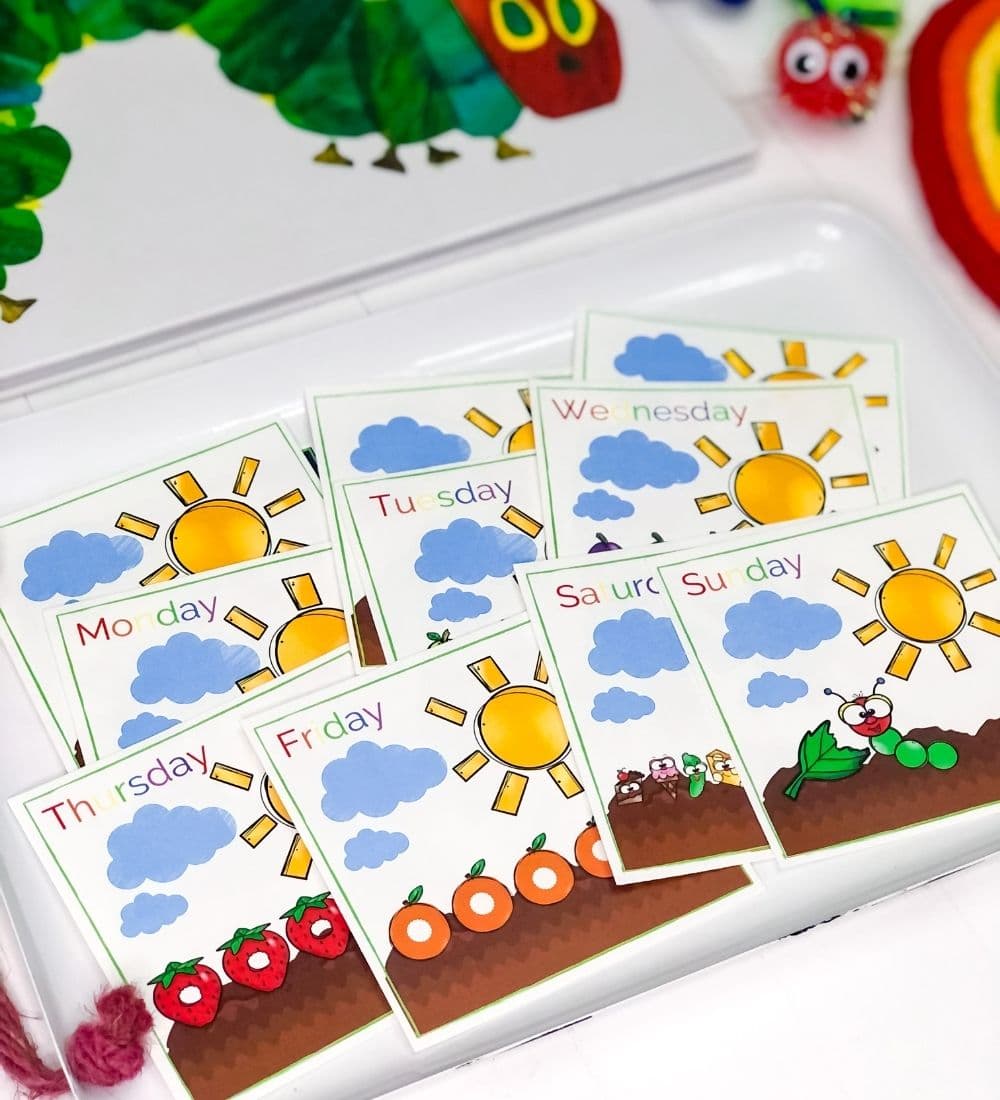purposeful play
The Sharing Dilemma
teach kids to share with one simple technique
We’ve all been there, sitting at a play date or hanging out at a family get-together. Your child is happily playing with something and another child approaches asking for the toy (or possibly just yanking it out of your child’s hands)! You hold your breath, hoping the kids keep it together.
We have all been on the other side as well-watching as our child approaches another for a toy. Once again we hold our breath hoping our kid doesn’t snatch the toy away or worse yet- hit the kid for the coveted item.
As a teacher and a mom I’ve seen this scenario play out over and over again. How to effectively teach kids to share was a popular topic of discussion among myself and colleagues.
Sharing is always a sensitive topic and my classroom was no different! No matter how much we talked about the importance of sharing-tears would be shed and feelings would be hurt.
Until one day, when I attended an incredible teaching conference that TRANSFORMED my entire classroom environment with just one simple technique.
When I became a Mom- I consistently used this same technique during play dates and family get-togethers -always getting the same positive result.
First off, before we go any further, let me just paint a picture of how things were before.
Meet Jessica and Lilly.
before scenario
Fighting over toys
Imagine if you will two kids, Lilly and Jessica. Lilly and Jessica are friends and their parents have gotten them together for their weekly play-date. Lilly is busy playing with a mail truck. that she is quite fond of. She’s kind of engaged in her play but she’s a little worried.
She is very aware of the fact that at any moment if Jessica sees the mail truck and wants it, she will have to “share” it immediately. And by “share” it- I mean hand it over right then and there. The vague expectation that has been set for Lilly and Jessica on these play dates is that they need to “share” immediately whenever someone wants a turn.
Lilly looks around frantically, just hoping Jessica doesn’t come for the truck. Lilly is unable to really get fully engaged in her play because of the expectation that has been set. The expectation being that you always give up the toy you’re playing with when someone asks you for it. She is so worried about having to give up her truck that she can’t really settle into any type of meaningful or purposeful play.
Now here comes Jessica. Jessica sees Lilly playing with the mail truck. Jessica knows that Lilly will have to give her the mail truck if she asks. Jessica, remembering all the times she has had to give up what she was playing with, of course asks Lilly to “share” the truck.
Lilly isn’t ready to give up the mail truck yet as she’s enjoying it but hasn’t really been able to fully engage with it. She tenses up and holds the truck close to her chest.
Jessica seeing this, immediately shouts out for all to hear “LILLY’S NOT SHARING!!”
The parents watching this play out both tense up, hold their breath and shift awkwardly in their seats.
Now, Lilly has two choices.
She can hand over the mail truck and try to find something else to play with-fully knowing that the next thing she chooses could be taken away again at any moment. Or she can refuse-which of course will make Jessica upset, get her in trouble and then it’s all down hill from there.
You see, the environment that this vague sharing expectation has created is one of frantic play and panic. Kids are so concerned about having toys snatched away from them, that they are never able to settle in and get fully engaged. This type of environment prevents kids from really getting in-depth and purposeful with their play.
They are busy looking out of the corner of their eye knowing they will have to give up whatever they are playing with at another child’s whim. This way benefits no one.
the simple solution
When you're done may i have a turn?
Now lets talk about a better approach to teaching kids how to share.
It comes in the form of this simple question…
“When you’re done, may I have a turn?”
This sentence revolutionized my classroom. When I became a Mom-I found this technique to be equally as effective when my son was playing with his cousins or friends.
Instead of preaching “share, share, share” I taught the children to respect the play of their peers.
When a child saw a toy they wanted to play with, instead of shouting, they would ask their friend this simple question. “When you’re done, may I have a turn?”
And just like, gone were the days of “MS. BRITTON, JAKE WONT SHARE!!!”
Now, is sharing an important skill and something to be taught and valued? Of course it is!
A child should absolutely be expected to share his or her toys (with the exception of those one or two special items that I will briefly touch on later in this post). When your child is playing with others the expectation of sharing their toys should be consistent and made very clear.
I am writing specifically about situations when a child is currently playing with an item.
It’s important for children to learn how to share their toys with others but that should not require them to stop their play and learning in its tracks by handing over what they are busy playing with.
Let’s peak back in on Lilly and Jessica and see how things are going.
after scenario
Peaceful purposeful play!
Jessica and Lilly have now been taught these four key expectations.
1. You never take something out of someone else’s hands.
2. If you would like a turn with something that is being used you simply ask “When you’re done, may I have a turn?”
3. When someone asks you “When you’re done, may I have a turn?” you always answer “Yes, when I’m done, you may have a turn.”
4. When you’re fully finished playing with the toy, you hand it to the first person that asked you for it and tell them “I”m finished, it’s your turn!”
Now when Lilly is playing with the mail truck she can really settle in and get in-depth with her play. She knows that at no time will the mail truck be snatched out of her hands or taken from her before she is done playing.
Children thrive with well set boundaries and clear expectations. When this sharing technique is used, there is an instant calm in the room as the expectation for taking turns has been made very clear.
Lilly is no longer trying to avoid Jessica. Their interactions become much more positive and interactive.
Lilly knows that she has the freedom to stay engaged in her play as long as she would like. This in turn promotes high level playing which produces a dramatic increase in learning.
She begins to value her play and see it as important and valuable. In turn she will also begin to view the play of her peers as valuable and worthwhile!
Jessica is empowered by the fact that she is able to ask for a turn in an effective and positive way. She is confident in knowing that she will get a turn when the other person is finished. She also knows that this same expectation will be held when she is playing with something.
When Jessica chooses to play with a toy horse, she knows she will be able to play with it until she is ready to be done. She will be able to get involved and develop complex play scenarios. She has learned to respect the play of others as well as her own.
The entire room develops a feeling of calm, as children learn to respect the work and play of one another and in turn of themselves as well! Their play becomes increasingly more in-depth and complex as the stress has been removed and replaced with a calm confidence that their play is important and worthwhile!
a better way to share
Tips and tricks
tip #1
Consistency: at home and beyond
This is a strategy that can and should be used in all areas of a child’s life. Consistency is the key.
Whether you are at home, play dates, vacations or family get-togethers, keep this sharing expectation intact.
Don’t be afraid to calmly tell another child shouting at the top of their lungs “YOU HAVE TO SHARE” about this approach. You will be surprised how quickly kids adapt to this method.
tip #2
Model and practice sharing
Our kids seems to always be watching us so be sure you model this method when you would like a turn with something. When you are playing with your kids practice this method of sharing so it becomes second nature. Practice will help reinforce this new way to teach kids to share.
tip #3
What about the NEVER ENDING TURN?
Though this strategy, when done consistently, works so incredibly well there still may be times when you bump into the “never ending turn”. Though this rarely happens, it can on occasion happen-especially with a brand new toy.
In these cases you can decide to set a timer for an appropriate amount of time and when the timer goes off another child gets a turn.
This should be reserved though for those rare occasions. Stay consistent with the “When you’re done may I have a turn?” and you shouldn’t have to rely on the timer method very often.
tip #4
What about a child's super special toy?
